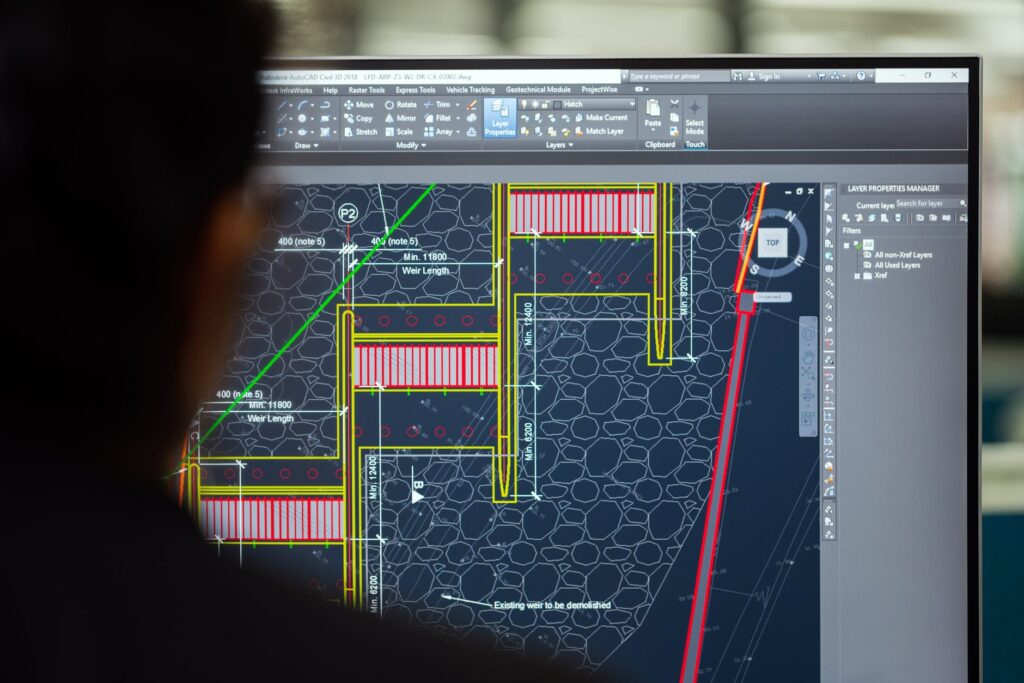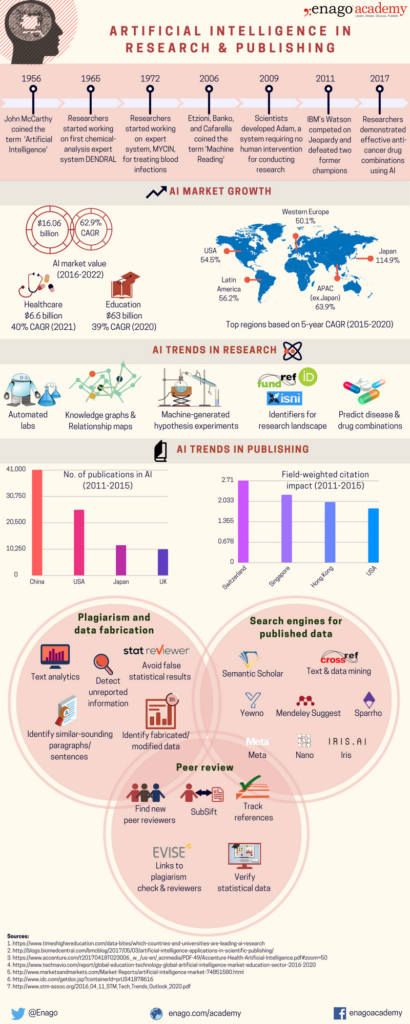Category: Creativity & Innovation
(6 von 100)
Why: We want to you notice the AI role in R&D, so that you can keep your eyes out for an innovative development opportunity.
The application of AI in research has grown tremendously with a focus on automation of research techniques from generating a hypothesis to conducting experiments.
Enago Academy
Reading material:
In a flash, here is how you do it!
Table of Contents
In Short
AI-augmented research and development use big data, machine learning to improve R&D processes efficiency, speed, relevancy, and precision.
AI vs. ML
Here, we clear up a common misunderstanding.
Artificial Intelligence: “Intelligent agents” any system that perceives its environment and takes actions that maximize its chance of achieving its goals.
Machine Learning: an algorithm that improves itself (regression) with input data.
- Supervised learning
- Unsupervised learning
The problem is how to harness this potential of AI.
1. Predictive Innovation
We can utilize AI to find innovative patterns that enable
- identify available resources because informed people know where to look.
- predict customer’s needs and make offers readily available.
Stage 1: User-generated content collection (# data points = 234017)
Stage 2: Semantic AI & ML sorting (# data points = 453)
Stage 3: Human expert validation (# data points = 35)
Stage 4: Commercial attractiveness (# data points = 3)
The main potential lies in its pattern recognition ability, how it leverages the effort to collect and sort meaningful insights.
2. Work with AI
Hybrid Intelligence
Complementing human problem-solving skills with machine intelligence and automation of experimentation.
- Human Intelligence: gain intiuition
- Machine Intelligence: gain analytic insight
In short, humans are better at working cross-disciplinary. Moreover, we have know-how stored in our DNA for the past millennium. Therefore, we are capable of making intuitive decisions.
3. More details
Below is an overview of where we stand in AI research and publishing. It illustrates the growth and future potential that will make other research methodology obsolete in specific fields.
Conclusion
AI can be and possibly must be implemented for our product and service research and development. Its capability to recognize patterns and generate useful insights is crucial to hypothesis validation. This can leverage years of effort.
Is your future development plan incorporating AI methodology?


